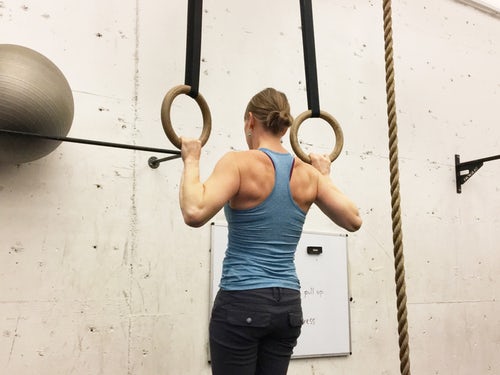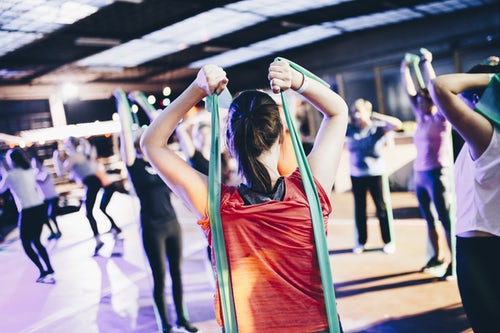nalco group
bone, muscle & joint pain physio
BOOK NOW / WHATSAPP ABOUT YOUR PAIN OR INJURY
- NOVENA 10 Sinaran Drive, Novena Medical Center #10-09, Singapore 307506
- TAMPINES 9 Tampines Grande #01-20 Singapore 528735
- SERANGOON 265 Serangoon Central Drive #04-269 Singapore 550265
Home > Blog > Sports Physiotherapy > Cross Training For Injury Prevention
Cross Training For Injury Prevention

Cross training is a specific training setup/routine that uses different forms of exercise other than the usual drills and exercises related to a sport. For example for a sprinter, instead of just doing sprint/run drills, we incorporate resistance training, higher balance, jumping, triple jump etc.
Cross training has many different functions and reasons, including:
- weather unpredictability (yeah, wet weather plans)
- availability of training facility/place
- personal training
- injury rehabilitation/physiotherapy
Every athlete must train specificly for their sport to ensure their form is spot-on and to excel in their sport, but they need also to include cross-training as part of their regimen to give a balance to their fitness which also levels up their sports performance.
Cross training provides a mini-break from the normal training impact, allows the usual sports muscles, ligaments, bones, tendons and ligaments to rest for a while, and the supporting muscles and soft tissues get to be worked on. To add to the runner example above, the runner can also include water training eg
- water aerobics
- swimming
Or even play soccer or tennis - they use different and similar muscles in different ways. Cross training is a great way to
- train and condition different muscle groups
- develop new skills and experience
- develop more growth
- challenging the body after hitting a plateau
- prevent repetitive strain injury or overuse injuries too
- etc
Benefits of Cross Training

- By participating in different types of exercises and sports, you can condition your entire body and not just very specific muscle groups/body parts. This may also help you improve your reflexes and adaptation speed.
- Increases flexibility in your training eg non-weight bearing exercises such as swimming
- Reduces exercise boredom and taxes your muscles in different ways, making it grow more
- Reduce overuse injury/overtraining injury
How does cross training prevent injuries?
At the top of the list is that cross training will help reduce injuries that are related to overuse or repetitive strain injuries.
The common sport muscles gets to take a break from the usual impact, but trained/impacted in a different way that may not give the same impact eg running versus water aerobics/swimming.
Secondly is that it helps to improve supporting muscles and parts that may have been neglected, hence bringing muscle strength and stamina balance. An example a football player that is heavily right footed will have much more strength and stamina with relation to right kicks and slides (and in contrast, a much weaker left leg) - by getting him to cross train via:
- weight/personal training
- swimming/water aerobics
- tennis/cycling etc
He will develop a stronger left leg which will then contribute to his overall performance as a football player due to the increased strength (or rebalanced strength in this case). This will also help to prevent one-sided muscle fatigue or muscle pulls due to imbalance strength/stamina.
How to cross train?
It can be any exercises or activities, as long as it's not associated with the main sport one does. Eg a footballer can cross train with:
- hiking
- weight lifting
- swimming
- tennis
A general fitness program has three parts to it
- Aerobic exercises (i.e. jogging, running, cycling) that improve cardiovascular fitness
- Strength training (i.e. weight lifting, rock climbing) that develops muscle strength and muscle stamina.
- Flexibility exercises (i.e. stretching, yoga) help keep muscles and joints flexible
Of course, the first thing you should do is to visit your doctor to ensure that you're safe to start a fitness program.
Next, consider what is convenient/available to you. Do choose ones that you have interest or enjoy.
You can have 2 activities alternative days between Mondays to Saturdays. If that's too intense, then alternate between 4 days etc for you to modify. Some people may want to do 2 activities in a single day too, so it depends on your interest, energy level, available time etc.
If you can balance out your exercises to ensure that it's whole body being trained, and ensure at least 30 minutes of moderate activities minimum.
Of course, don't rush into cross training, best is to ease into it by gradually increasing the duration, then the frequency. Use the "10 Percent Rule" - increase frequency, duration or intensity by no more than 10% each week - take your time.
